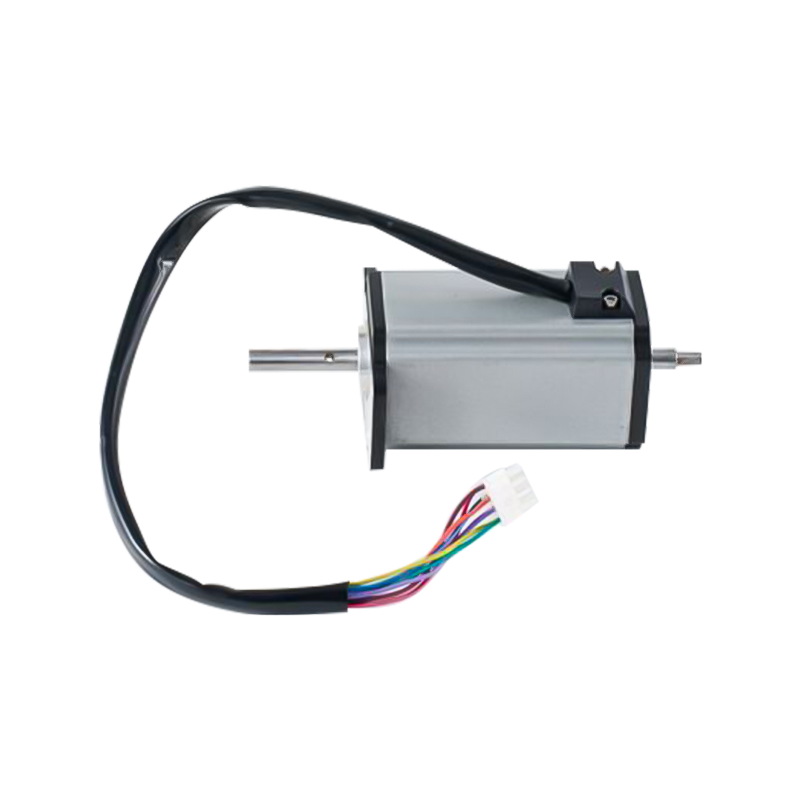BT001 Honda Accord Windshield Wiper Motor
Power Voltage 12V DC, 35W No-load Current Low speed ≦1.5A, high speed ≦2.0A No-loa...
View MoreThe Importance of Safety in Automatic Door Systems
Automatic doors have become essential in modern buildings, offering convenience and accessibility in places like shopping malls, hospitals, and office buildings. At the core of these systems is the Automatic Door Motor, responsible for the smooth operation of the door. While these motors are designed for efficiency and ease of use, their safety features are just as crucial, as they need to prevent accidents such as pinched fingers, entrapment, or damage to surrounding objects. Ensuring that these motors operate safely requires careful engineering, regular maintenance, and the integration of protective technologies.

Built-in Safety Features in Automatic Door Motors
To prevent accidents, modern Automatic Door Motors are equipped with a range of built-in safety features that reduce the risk of entrapment. One of the important features is anti-pinch technology, which ensures the door reverses or stops if it detects resistance during its closing motion. This resistance could be a person’s hand, an object, or any obstacle obstructing the door. Anti-pinch sensors can detect even pressure and trigger an immediate reversal, preventing injury.
Many automatic door systems also incorporate motion sensors that detect objects or people near the door. These sensors ensure that the door does not close on a person, even if they are in the doorway. These sensors are often infrared or ultrasonic, allowing them to pick up on movement or presence within a specified range. The door will either stop or open again if an object or person is detected.
Pressure Sensitivity and Reversal Mechanisms
Pressure-sensitive edges are another key safety feature of Automatic Door Motors. These edges are integrated into the door frame and detect any resistance when the door is closing. If an obstruction is detected, the door automatically stops or reverses. This is particularly useful in high-traffic areas where items or people may unintentionally block the door. By using this technology, the risk of injury or damage to objects is reduced.
For more robust safety, some automatic door systems include safety mats or infrared beams placed along the ground or doorframe. These devices form an invisible safety barrier that detects when someone or something crosses the path of the door. If the safety beam is broken, the door immediately reverses or pauses its movement. These features are essential in places like hospitals or schools, where a higher degree of safety is required.
Regular Maintenance and Testing
Ensuring the safety of an Automatic Door Motor also relies heavily on regular maintenance. Over time, wear and tear can affect the performance of safety sensors and mechanical parts. For instance, dust and debris can block motion sensors, or mechanical parts may become misaligned, which can interfere with the door’s ability to detect obstacles accurately. These systems must be inspected regularly, with particular attention to the functionality of the safety mechanisms.
Routine checks should include testing the door’s reversal mechanism, ensuring sensors are functioning correctly, and verifying the integrity of the pressure-sensitive edges. Motor and sensor calibration should be performed to ensure the door reacts appropriately to obstruction. Neglecting maintenance can cause potential safety hazards, as faulty sensors or damaged mechanisms may not prevent accidents.
Additional Safety Considerations
In addition to the technical safety features, operators and building managers should educate users about safe practices when interacting with automatic doors. For example, people should avoid leaning or pushing on the door while it is in motion, as this can confuse the sensors or disrupt the operation. Installing visual indicators, such as warning lights or sound signals, can alert people when the door is about to close or when it’s safe to walk through.
For areas with high foot traffic or vulnerable individuals, additional safety measures such as slower door speeds or more sensitive detection systems can be implemented to further reduce the risk of injury.
A Balance of Technology and Vigilance
The safety of an Automatic Door Motor is a critical consideration for both manufacturers and users. With the proper safety features, including anti-pinch sensors, pressure-sensitive edges, motion detectors, and regular maintenance, automatic doors can operate safely and efficiently. By combining technology with diligent care, the risk of injury and damage can be significantly minimized, ensuring that these convenient systems remain secure and functional for everyone.